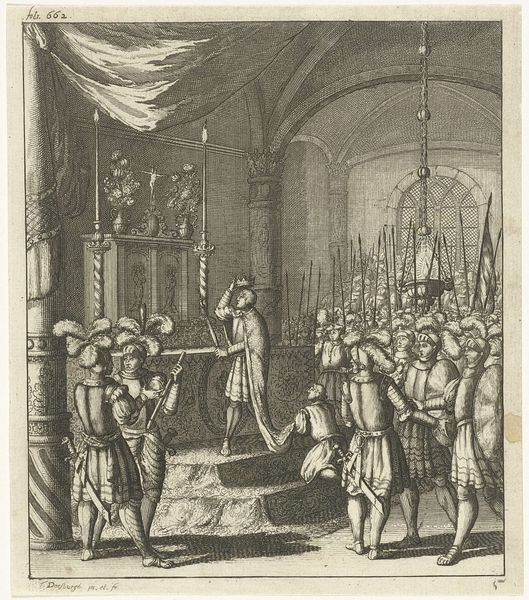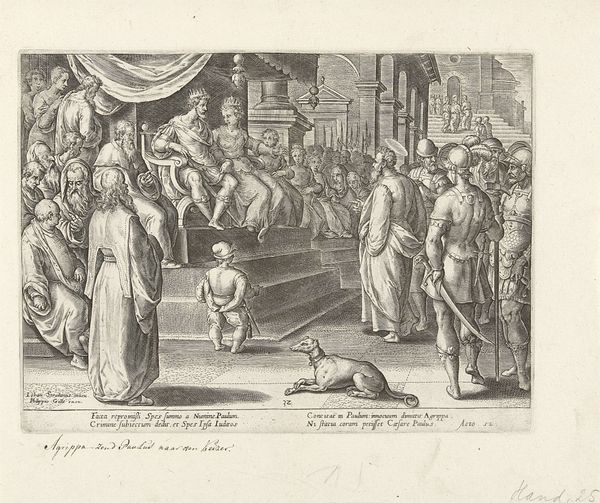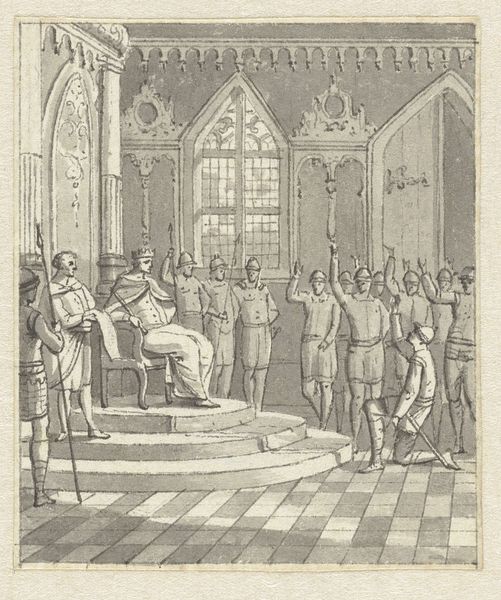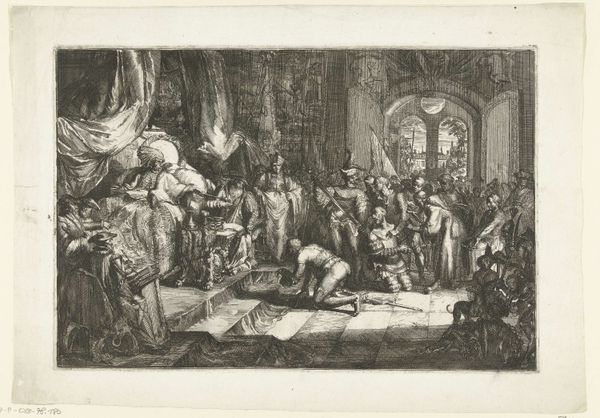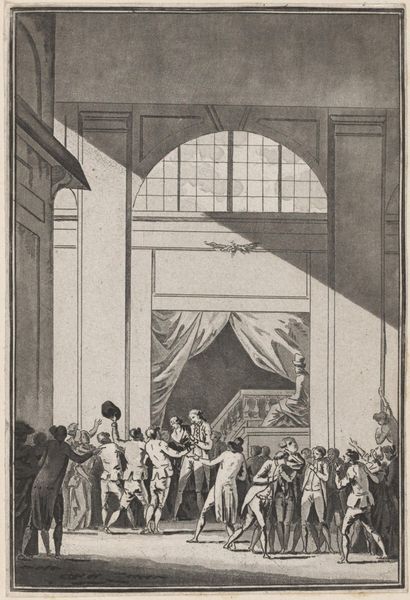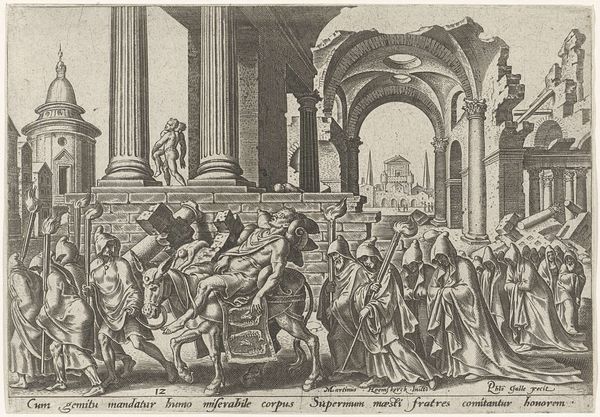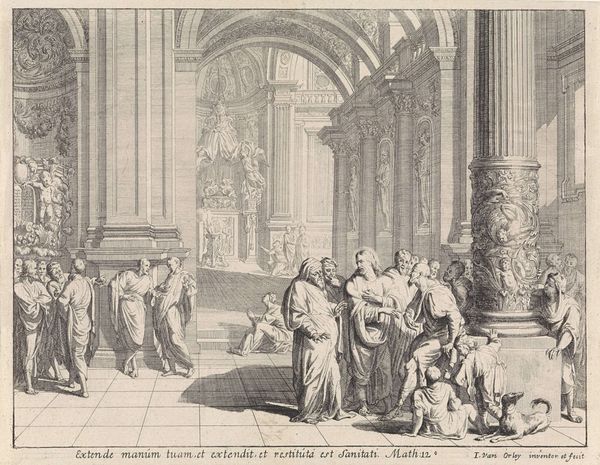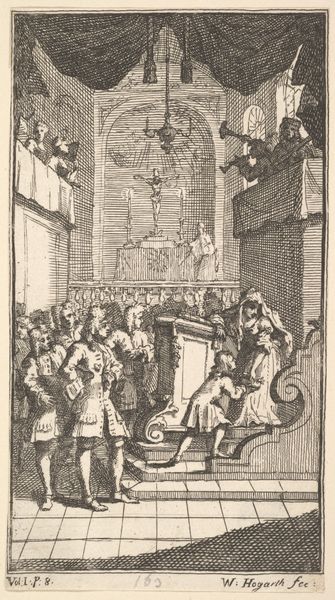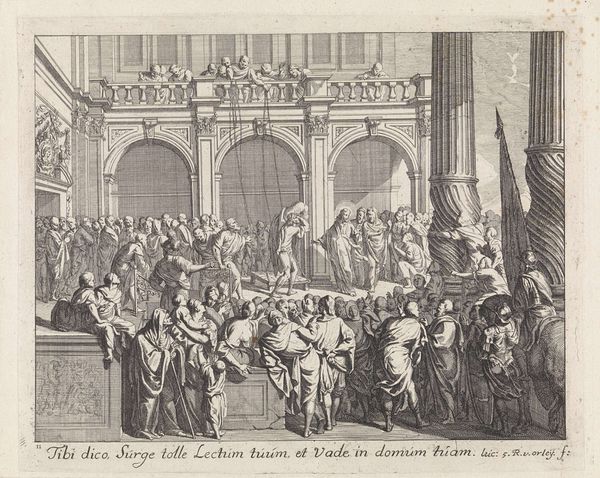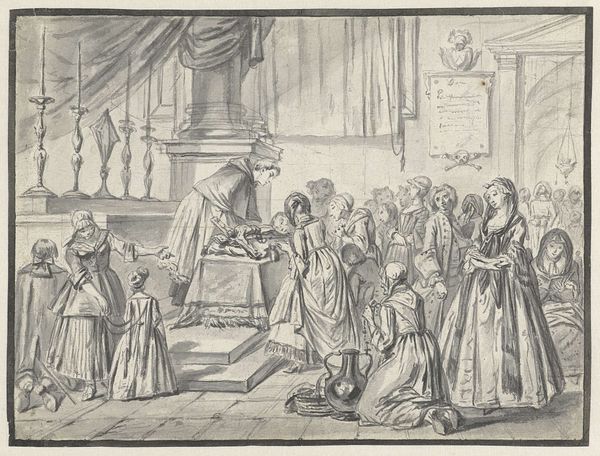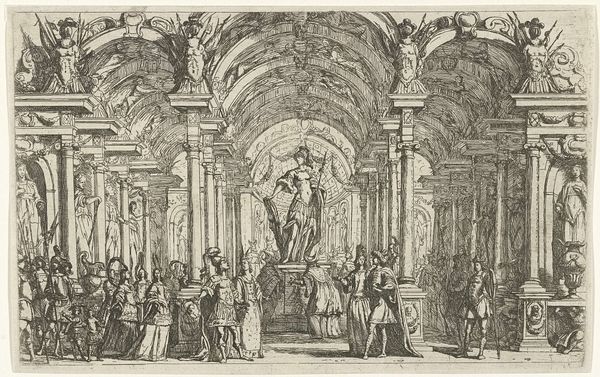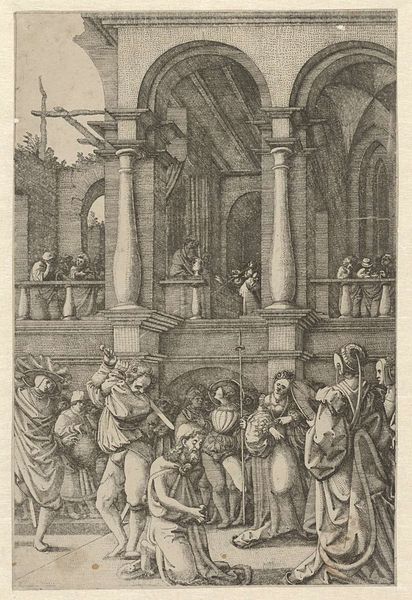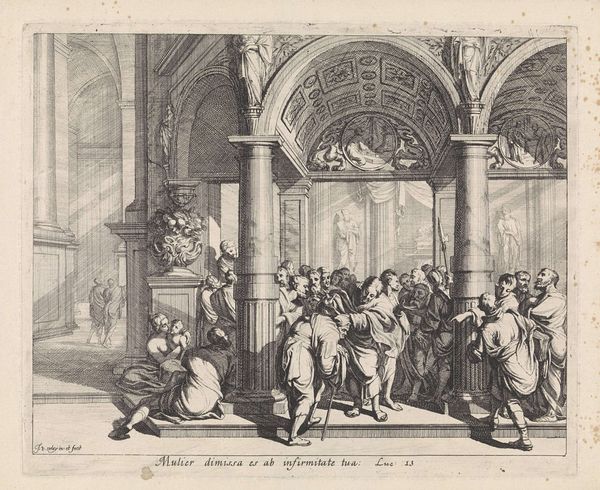
print, engraving
#
ink drawing
#
narrative-art
#
baroque
# print
#
form
#
line
#
cityscape
#
portrait drawing
#
genre-painting
#
history-painting
#
engraving
Dimensions: height 226 mm, width 276 mm
Copyright: Rijks Museum: Open Domain
Editor: So, this is "Prophecy for the Year 1632," an engraving from between 1630 and 1631, attributed to an anonymous artist. It's quite a crowded scene, inside what looks like a church. There's a seated figure being crowned. It strikes me as a really busy, politically charged image. What's your read on this? Curator: The density is crucial. This isn't just a snapshot; it's a complex allegory reflecting the intense religious and political climate of the time, particularly concerning the tensions within and between Protestant factions. Notice the specific architectural setting—likely alluding to a site of religious power—and consider how the act of crowning, usually symbolic of legitimate rule, is rendered here with figures of diverse social classes. It asks us to consider: who truly holds authority? Editor: It definitely feels critical. So, it's not just a straightforward depiction of a coronation. Curator: Exactly. The 'prophecy' element invites us to view the scene not just as an event, but as a pointed commentary on the potential consequences of current actions and power dynamics. How does the artist's use of line contribute to that feeling of tension and potential upheaval, given the social strata visible? Editor: The crisp lines and the contrasting tones make everything very clear, almost harsh, highlighting each individual face in the crowd and their reactions. You get a sense of different opinions and social positions all vying for recognition. It doesn’t look celebratory. Curator: Precisely. By meticulously detailing those expressions and societal roles, the artist stages a dialogue on whose voices mattered, whose futures were at stake, and what kind of 'unity' was actually being envisioned during those turbulent times. Think about how this contrasts to the classic baroque promotion of monarchs. Editor: This really reframes my initial understanding of the piece. It is a snapshot of cultural anxieties. Thanks! Curator: And it underscores the power of art as a form of social critique. It's a stark reminder that images can actively participate in shaping public discourse, questioning dominant narratives.
Comments
No comments
Be the first to comment and join the conversation on the ultimate creative platform.
